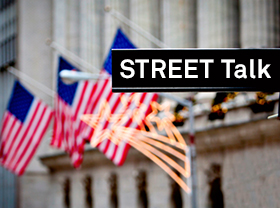S&P Global Offerings
Featured Topics
Featured Products
Events
S&P Global Offerings
Featured Topics
Featured Products
Events
S&P Global Offerings
Featured Topics
Featured Products
Events
Banking & Capital Markets
Economy & Finance
Energy Transition & Sustainability
Technology & Innovation
Podcasts & Newsletters
Banking & Capital Markets
Economy & Finance
Energy Transition & Sustainability
Technology & Innovation
Podcasts & Newsletters
S&P Global Offerings
Featured Topics
Featured Products
Events
Research — 22 May, 2024
"Street Talk" is a podcast hosted by S&P Global Market Intelligence that takes a deep dive into issues facing financial institutions and the investment community.
The investment community has expressed great concern over banks’ exposure to commercial real estate and questioned whether a severe downturn could lie on the horizon, but Rich Hill, head of real estate strategy and research at Cohen & Steers, is not in the camp.
In the latest Street Talk podcast, Hill discussed the misconceptions about commercial real estate, the considerable differences in risk across various subcategories and how publicly traded REITs serve as a leading indicator to the private markets. The veteran of the real estate space further argued that the current cycle is very different than the global financial crisis and could represent the greatest opportunity to invest new capital in a generation.
Sharp increases in interest rates in 2022 and 2023 punished commercial real estate valuations, particularly in the office sector, where the rise of remote work has called into question future income from the properties. Investors have expressed worry about other subcategories and banks’ exposure to the asset class as they question whether borrowers can refinance loans at notably higher rates when they mature.
That fear has created a rare chance to invest in private real estate, according to Hill, who compared the opportunity to those that emerged in the early 1990s and the aftermath of the global financial crisis.
"We think we are on the precipice of a generational opportunity to buy private real estate. This — these opportunities don't come around very often," Hill said. "Valuations don't reset 20% to 30% lower very often, so for investors with new capital, patient capital that can deploy that today into tomorrow's valuation, you should be really excited about this environment."
Despite challenges in the office market, Hill said commercial real estate fundamentals are holding up well. He noted that net operating income growth stands around 4.5% to 5%, well above the historical range of 2.5% to 3%. He said that growth is particularly notable given that growth would be flat to negative in similar, historical periods.
He argued that many market watchers have misconceptions about the commercial real estate market. He said lending standards were conservative heading into the current environment as regulators focused on banks with elevated CRE concentrations and cautioned against aggressive lending. He further noted that many properties have experienced significant price appreciation and net operating income growth since 2010, embedding additional equity into the loans securing properties. Given that increased cushion, many properties can still support cash-out refinances even in the face of price declines, he said.
Hill also believes the publicly traded REIT market can offer clues into the future performance of private real estate. He said listed REITs serve as leading indicators of downturns and recoveries, and right now, the listed REIT market is giving the commercial real estate market a signal that there is a light at the end of the tunnel.
He noted that listed REITs have rallied significantly from the bottom recorded in October 2023, with the group recording some of the strongest monthly performances ever in November and December. Hill said the Federal Reserve’s signaling that it was done raising interest rates served as a catalyst for listed REITs. But, he also noted that the Fed’s senior loan officer opinion survey showed that lending standards were no longer tightening at the same pace. Hill believed that was a positive sign and reason to be more constructive on listed REITs.
"Peak bad in the lending markets actually turned out to be a pretty good thing," Hill said. "We think that is setting up for a really, really attractive entry point right now."

This article was published by S&P Global Market Intelligence and not by S&P Global Ratings, which is a separately managed division of S&P Global.

